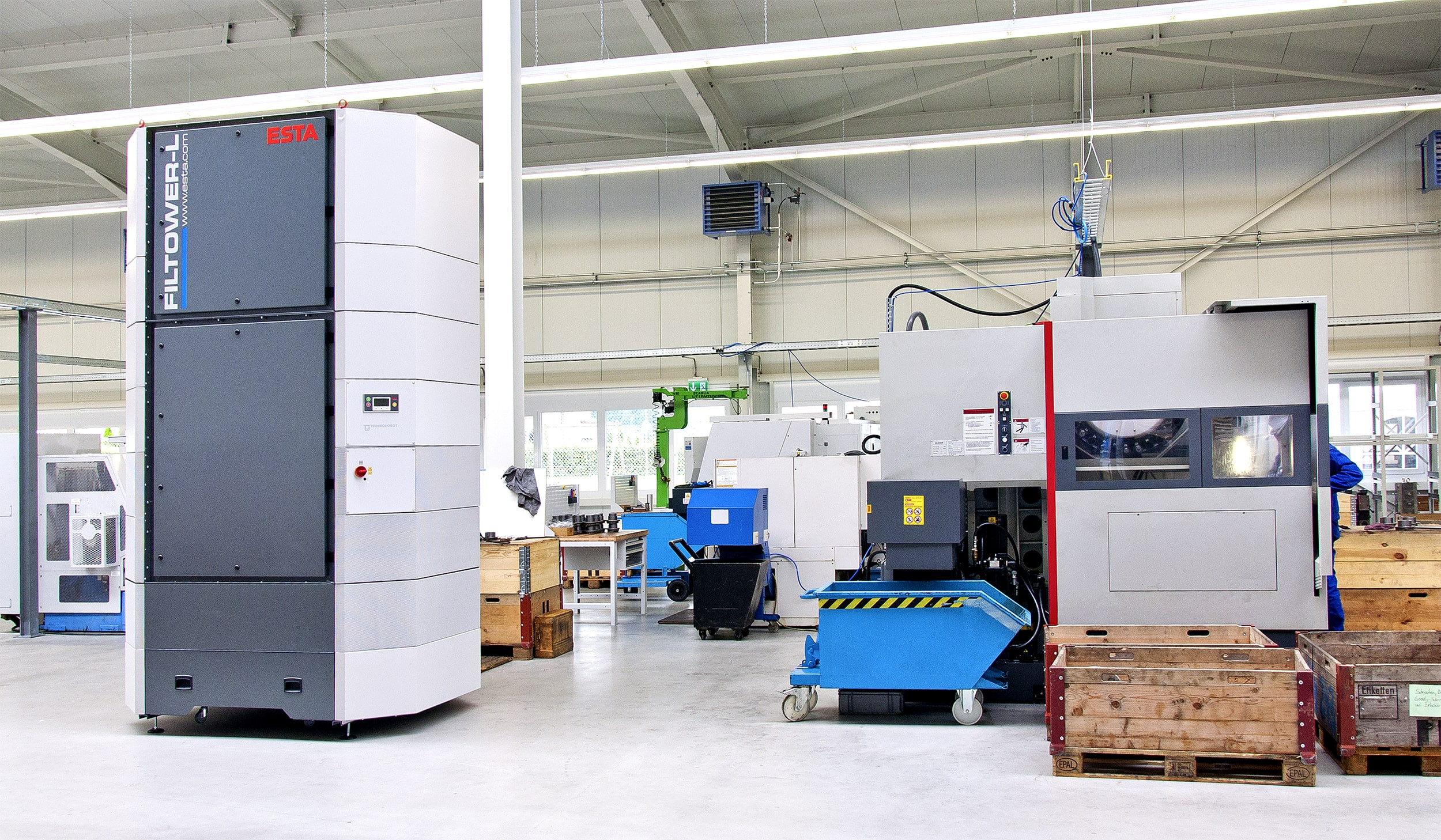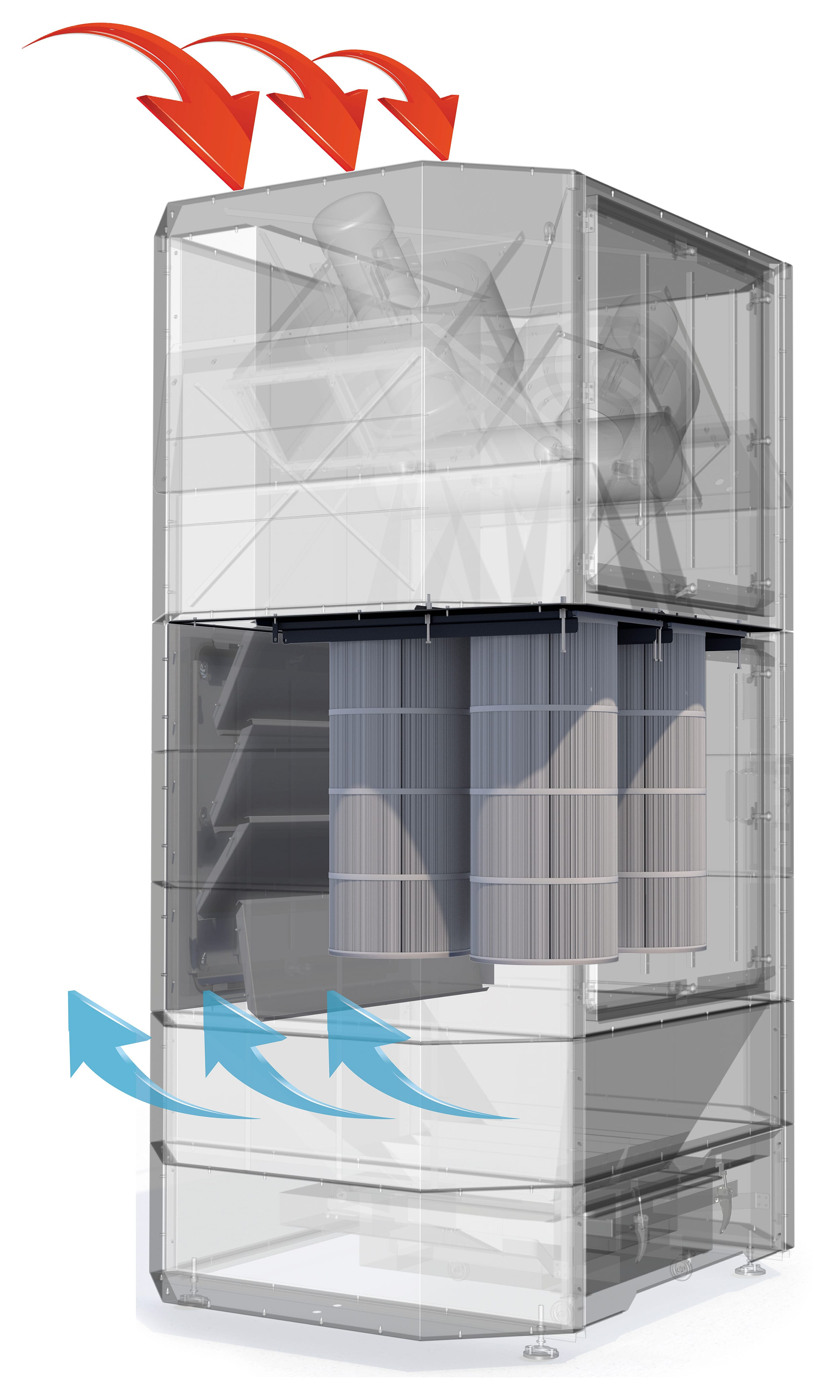In modern day manufacturing, we must evaluate the potential impact that our operations may have on the workplace environment and workers’ wellbeing and long term health.
In 'Working Safely with Oil Mist - The ESTA OILMAC Oil Mist Separator', we summarised the need to control oil mist and aerosols within metalworking and machining environments and highlighted how the OILMAC oil mist separator can help control this as a LEV solution. Below we have detailed the Filtower-L stand alone, plug and play filtration tower to complement oil mist LEV systems and to improve the general working environment surrounding metalworking and machining operations…
What are the dangers of oil mist arising from metalworking and machining?
Workers who are exposed to oil mist from using cooling lubricants during machining processes are at risk of developing skin disorders, such as dermatitis, or respiratory problems, such as occupational asthma, bronchitis, irritation of the upper respiratory tract, breathing difficulties or even a rarer lung disease known as extrinsic allergic alveolitis (EAA).
What causes oil mist and fumes during the use of cooling lubricants?
Oil mist and fumes can be caused by mechanical effect – through vaporisation of the cooling lubricant around quick rotating tools such as milling, turning and grinding. They can also be caused through the condensation of vaporised cooling lubricant on warm surfaces, such as warm components stored in the open polluting ambient air with emissions. All surfaces coated with cooling lubricants could be considered as a source of emission. The warmer the surface, the greater the risk of contamination, which increases the risk to employees.
What regulations are in place?
COSHH regulations require exposure to metalworking fluids by inhalation, ingestion or skin contact to be prevented where reasonably practicable, or failing that, adequately controlled. Implementation of exposure control measures, such as Local Exhaust Ventilation (LEV) and complimentary systems will help to control this and reduce the risk.
Controlling oil mist and aerosols not only contributes to employee health, this also provides a positive impact on the general working environment. Machinery, premises and tertiary equipment also benefit from controlling coolant deposits, from a reduced impact on wear and tear and a reduction in general maintenance costs through to an improvement on general building décor.
ESTA FILTOWER-L
The ESTA FILTOWER-L is a stand-alone, plug and play hall ventilation system for the supplementary filtration of oil mist and aerosols arising from metalworking and machining operations. These are used to compliment LEV systems to improve the internal environment or where local containment extraction may not be not practical.

FILTOWER systems work according to the layer and displacement ventilation principle.
Key benefits of the Filtower-L system:
The system draws polluted air in through the top of the unit from a radius of up to 15m, which then flows through a multi-level filter system, providing for a high separation efficiency and longer filter life.
A pre-separation system filters coarse particles, which leads to an improved life span of the filter cartridges. Following pre-separation, residual fine particles are passed through long life cartridge filters with 99.9% separation efficiency.
Cleaned air is recirculated via diffusers on the sides at floor level, with minimal draft to ensure employees are continuously supplied with fresh air in a targeted way. This also boosts air circulation as the air supply from below supports the uplift of pollutants, facilitating their intake and continuing the cycle.
In contrast to central systems, the Filtower stand-alone, plug and play ventilation system requires no duct work or pipe systems. The units are supplied fully assembled and can be deployed flexibly in the work space.
The sound insulated housing design and low-draft clean air diffusers ensure a pleasant working environment, even in direct proximity to the equipment.
Separated coolant is collected in a container with drain plug, allowing for easy disposal, or a pump can be fitted to return the collected lubricant to the coolant reservoir.
Cost savings: the system enables full recirculation of the cleaned air back into the work place, thereby reducing energy consumption by preventing the need to re-heat air which has been vented externally to atmosphere.
The ECO+ and Ecolight models are equipped with frequency invertors with fully automatic sensor control or manually adjustable volumetric air flow control, enabling extraction performance to be adapted to demand, allowing for additional energy savings.

To find out more from HSE, see the following links:
About Metalworking Fluids:
http://www.hse.gov.uk/metalworking/about.htm
Working Safely With Metalworking Fluids – A Guide for Employees: http://www.hse.gov.uk/pubns/indg365.pdf

